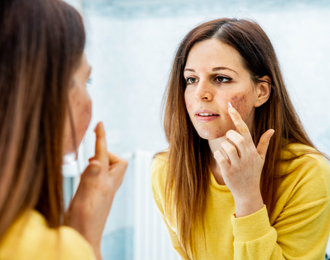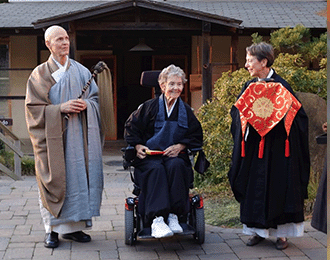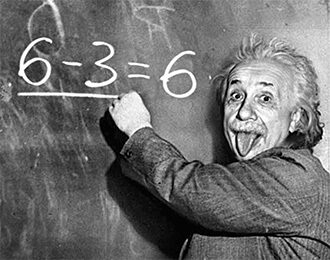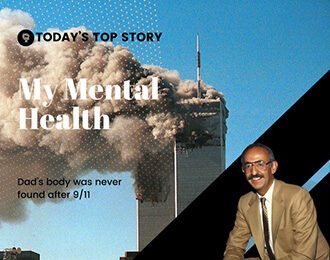Helping Your Autistic Teen Build Healthy Relationships
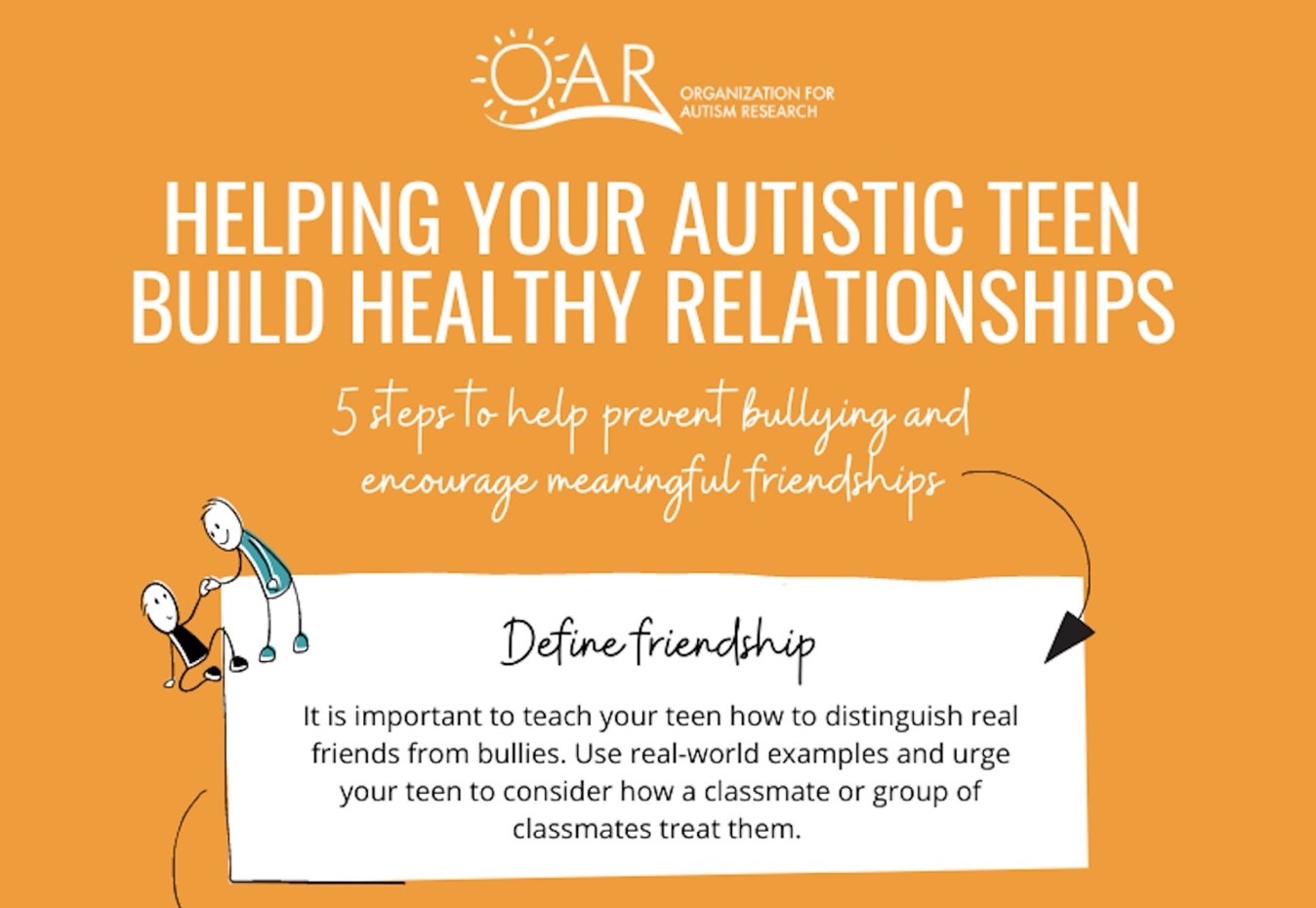
Organization for Autism Research March 2021
Step 1: Define friendship
It is important to teach your teen how to distinguish real friends from bullies. Use real-world examples and urge your teen to consider how a classmate or group of classmates treat them
Step 2: Find opportunities to teach social skills
Ask the school social worker, guidance counselor, or special education teachers if they can help facilitate opportunities for your teen to get involved with extracurricular groups. These groups can help them engage with peers around topics of interest and develop a network of real friends.
Step 3: Build awareness and self-advocacy skills
Autistic teens often need help knowing what bullying looks like. Work together to practice identifying the signs of bullying and responding appropriately. You can help them develop this important skill by creating a social story or role-playing.
Step 4: Ensure school awareness and education
Make sure your teen’s school promotes inclusion to the fullest extent and has strong policies against bullying. Talk to the teachers and administrators about autism and what it means for your teen in particular.
Step 5: Address peer awareness and peer education
Information and awareness training about autism for peers, teachers, and other staff members also can make a difference. Even a small group of school peers who are “tuned in” to your teen can provide a secure layer of protection.
In middle school and high school, adolescents are asked to navigate increasingly complex social waters. Learning how to adapt to these new conditions and build strong, healthy relationships can be an overwhelming task for autistic teens, but it is an important part of ensuring good mental health.
Bullying is defined as “unwanted, aggressive behavior among school-aged children that involves a real or perceived power imbalance” (U.S. Department of Health and Human Services, 2014). Bullying peaks in the middle school years and can take many different forms: physical, verbal, psychological, and even cyber. What is important to recognize is that bullying does not just happen in plain sight. Most older people can remember their neighborhood or school bully. While that type of bully still exists, bullying can happen in subtle ways, and tends to be a group activity revolving around social ties.
Given that autistic adolescents have difficulty understanding social rules and norms, they are more vulnerable to insidious types of bullying, such as exclusion from peer groups. Even after several incidents have occurred, they still may not notice that they are being bullied. They may also have a hard time realizing when they are being taken advantage of by someone who claims to be a “friend.” For these reasons, it is especially important to equip autistic adolescents with the capacity to identify well-meaning classmates and differentiate healthy relationships from unhealthy ones. Extra measures, such as school wide autism awareness and acceptance campaigns or peer buddy programs, can also be useful tools to help curb bullying and promote meaningful friendships.
It is important to note that bullying is not limited to peer-to-peer relationships. Sadly, there are adults who sometimes abuse positions of trust and engage in bullying behavior out of ignorance or plain lack of acceptance. As you teach your child about relationships and friendship, be mindful of teaching what “trusted adult” means, who they are, and most importantly, what makes them trustworthy.
For more information about autism, safety, and mental health, view all of OAR’s resources and register for their upcoming health webinar series here
